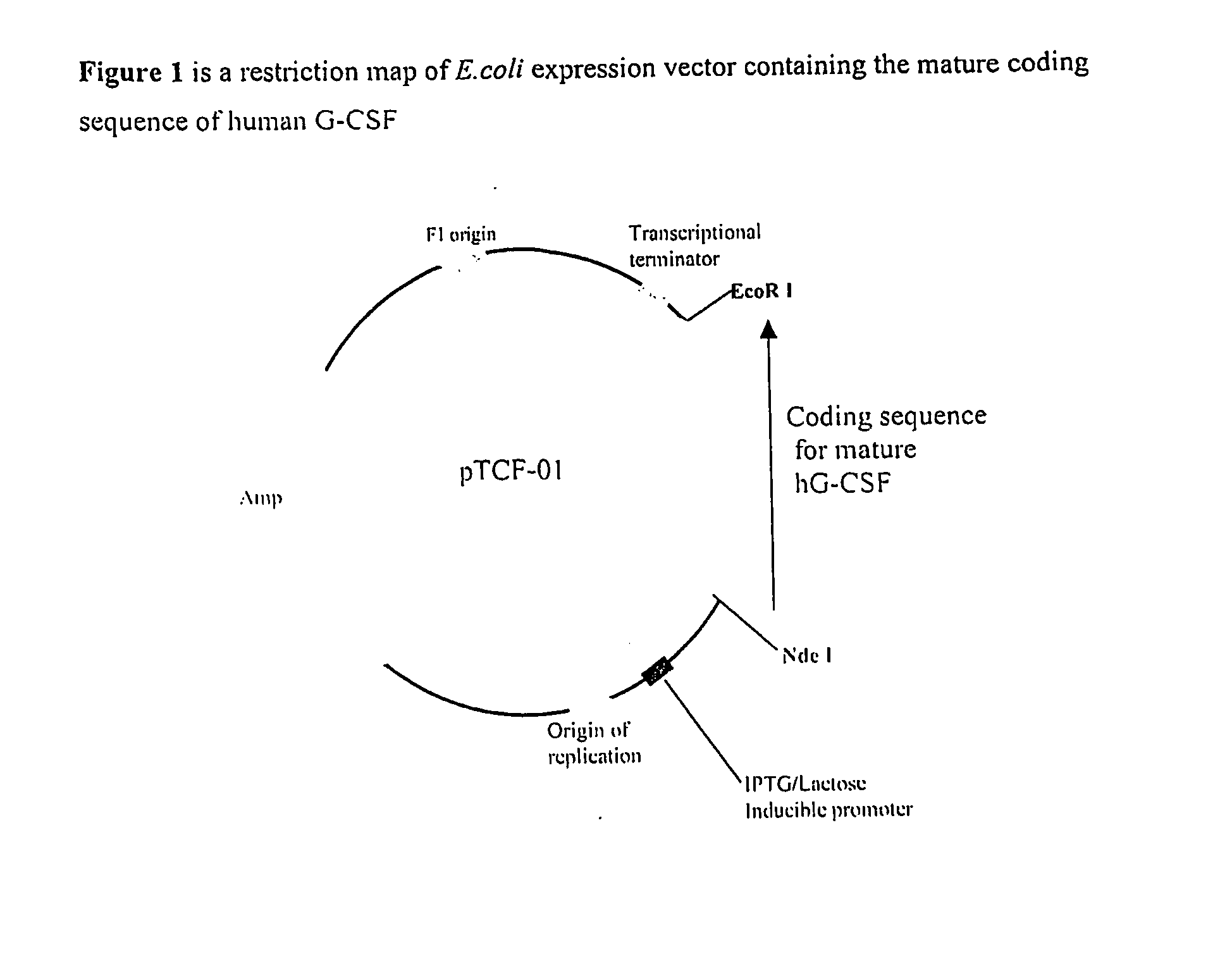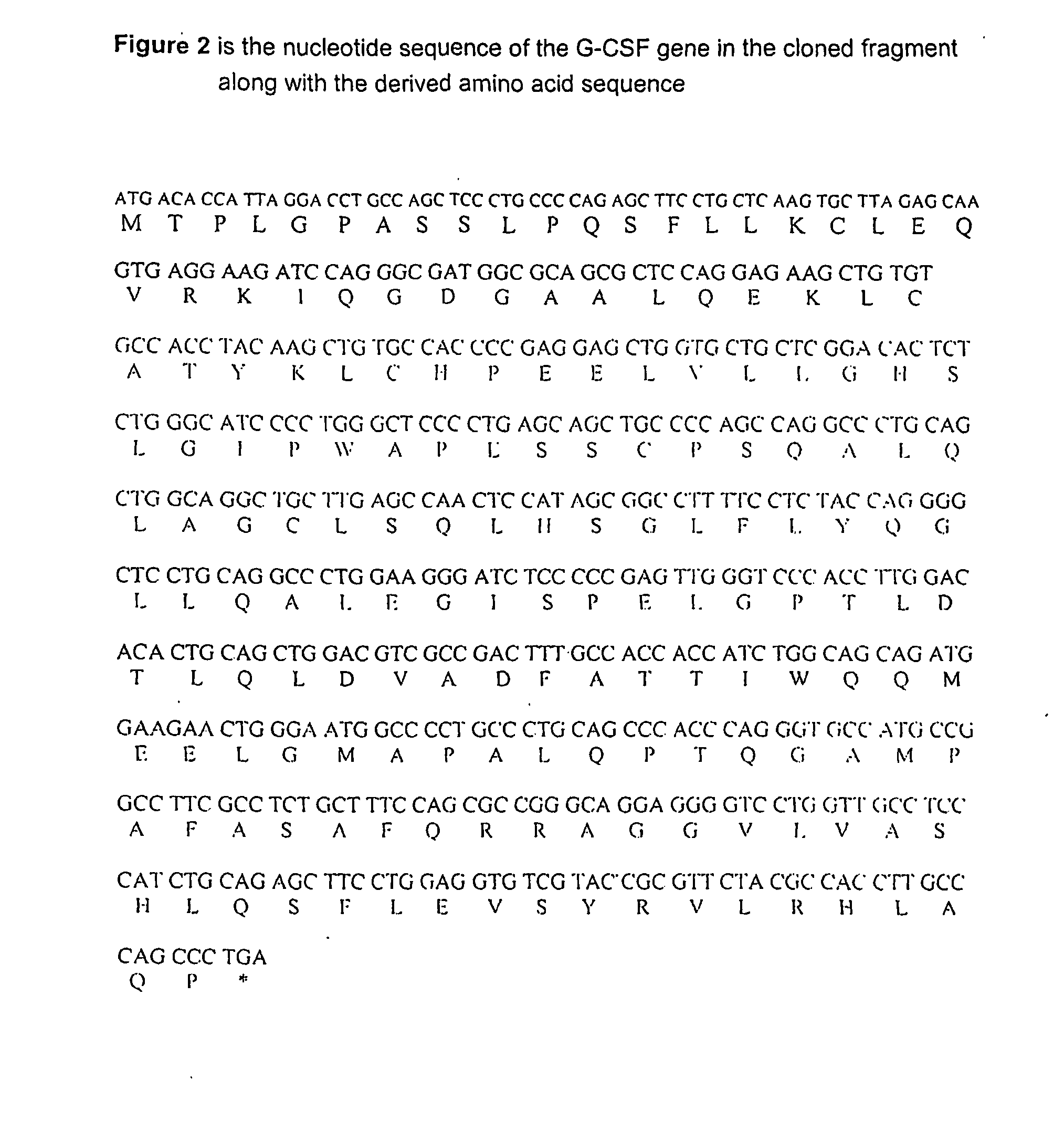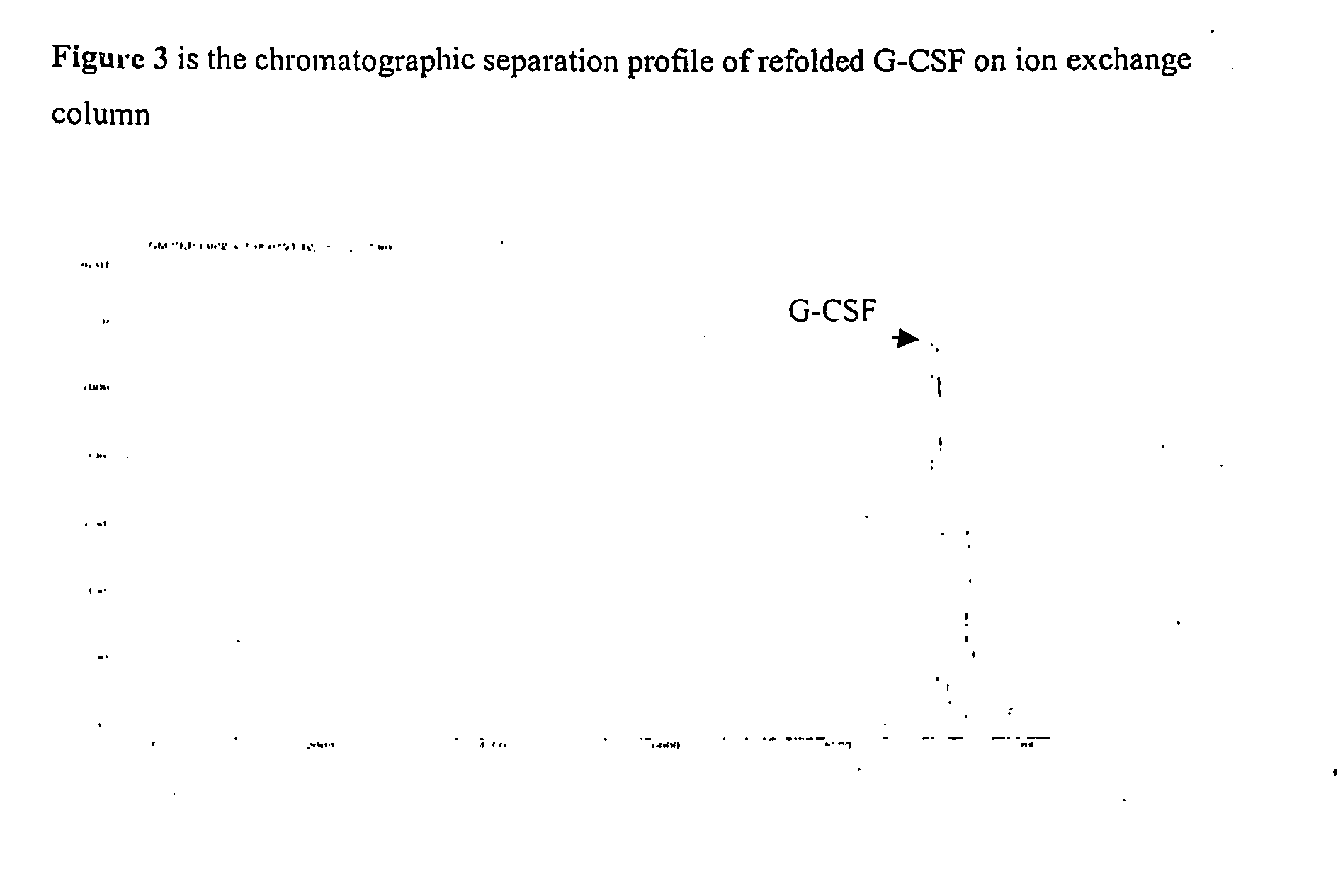Process for the Purification of Recombinant Granulocyte-Colony Stimulating Factor
a technology of granulocyte colony and purification process, which is applied in the field of purification of recombinant granulocyte colony stimulating factor, can solve the problems of reducing the yield of peptides, affecting reducing the purity of peptides, so as to achieve enhanced recovery
- Summary
- Abstract
- Description
- Claims
- Application Information
AI Technical Summary
Benefits of technology
Problems solved by technology
Method used
Image
Examples
example 1
[0040]The following example illustrates the simplified process for solubilization of inclusion bodies and refolding of the protein at acidic pH. This example relates to the use of a combination of sub-denaturing concentrations of urea or guanidinium chloride in the concentration range of 2.0 to 4.0 M with alkaline pH for the solubilization of G-CSF from the inclusion bodies. In a preferred embodiment of this invention, 2.0M to 6.0M urea or guanidinium hydrochloride in water is added lo the IB at a ratio of 10% to 20%, wv, the pH of the solution is held constant in the range of 8.0 to 11.0 depending on the clarity of the solubilized solution, for a brief period of 15 to 30 minutes. The pH of this solution is shifted directly to an acidic pH in the range of 3.5 to 5.5 and left at room temperature for 6 to 16 hrs for refolding.
EXAMPLE 2
[0041]This example relates to the ion exchange chromatography step that is used to purify the G-CSF protein solubilised and refolded from inclusion bodi...
example 2
[0043]This example relates to the ion exchange chromatography step that is used to purify the G-CSF protein solubilised and refolded from inclusion bodies. The refolded G-CSF is loaded onto a cation exchange column (carboxymethyl, sulphonyl or sulphopropyl functional groups) in pH range 3.5 to 5.5, preferably at pH 4.0 to 5.0 in anionic buffers that can provide buffering in this pH range for example citrate, phosphate or acetate. The buffers are generally in the molarity range of 5 mM to 50 mM preferably 10 mM to 25 mM. Washing of the column is done with the same buffer till the optical density at 280 nm comes to baseline. Elution of the protein from the column is done by a linear gradient of ionic salts containing chloride, citrate or sulphate in the concentration range of 0.0M to 0.5M in the equilibration buffer of a pH range 4.0 to 6.0. The G-CSF protein is recovered with good yields and a minimum amount of aggregated protein.
example 3
[0044]This example describes the use of a hydrophobic chromatography column as a polishing step for the therapeutic grade purification of G-CSF. The cation exchange column eluate is buffer exchanged with the equilibration buffer of the hydrophobic column containing ammonium sulphate in the molarity range of 0.25 to 1.0M more preferably around 0.4 to 0.6 M. The equilibration buffer is in the acidic pH in the range of 4.0 to 7.0, more preferably in the range of 4.0 to 5.0. Elution from this column is effected by reducing the molarity of ammonium sulphate in the buffer in a continuous linear gradient elution. The protein very often elutes towards the end of the gradient with improved recoveries seen when a small amount of ethanol is added to the eluting buffer preferably in the range of 2% to 20%. The hydrophobic matrix chosen can be of butyl, oetyl or phenyl functional groups more preferably butyl oroctyl attached to a resin derived from cellulose, agarose, dextran, synthetic polymers...
PUM
| Property | Measurement | Unit |
|---|---|---|
| temperatures | aaaaa | aaaaa |
| ionic strengths | aaaaa | aaaaa |
| pH | aaaaa | aaaaa |
Abstract
Description
Claims
Application Information
 Login to View More
Login to View More - R&D
- Intellectual Property
- Life Sciences
- Materials
- Tech Scout
- Unparalleled Data Quality
- Higher Quality Content
- 60% Fewer Hallucinations
Browse by: Latest US Patents, China's latest patents, Technical Efficacy Thesaurus, Application Domain, Technology Topic, Popular Technical Reports.
© 2025 PatSnap. All rights reserved.Legal|Privacy policy|Modern Slavery Act Transparency Statement|Sitemap|About US| Contact US: help@patsnap.com



